An arc flash is a potentially very hazardous event, in which the heat energy alone can cause ignition of clothing and extensive severe burns. The other affects of the arc flash can also cause severe injuries. The effects of an arc-flash injury can be life changing and the costs can be staggering. One utility company recorded three serious arc-flash injuries in a three-year period. Costs to date for medical, indemnity, and vocational retraining are $875 k with additional funds in reserve. Another company, a manufacturer, has reported it has experienced an average of 2.2 arc-flash injuries/year over the last ten years. The effects on people have included children not recognizing a parent, family breakup, depression, hearing and vision damage, and the need for extensive skin grafts. People must have protection from this hazard for their employer to meet OSHA requirements.
Potential hazards from electricity include electrical shock and arc flash. Electrical shock occurs upon contact or approach within the breakdown distance of an exposed, energized electrical conductor or circuit part. Arc flash occurs during breakdown when the arc current exceeds the glow-to-arc transition current. The arc current creates a brilliant flash of light, a loud noise, intense heat, and a fast moving pressure wave that propels products of the arcing fault. Products of the arcing fault, all stemming from the sudden and violent release of electrical energy, include ionized gases, metal vapors, molten metal droplets and shrapnel.
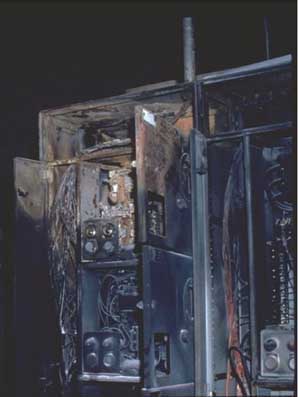
Photo 1. Investigation of an arc-flash incident
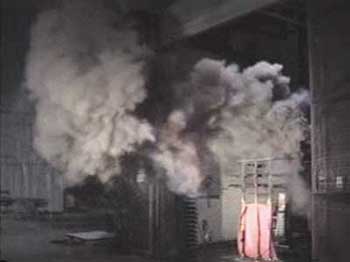
Photo 2. Arc-flash test case
NFPA 70–2002, National Electrical Code,2 requires that electrical equipment be marked in the field to indicate where an arc-flash hazard exists. NFPA 70E, Electrical Safety Requirements for Employee Workplaces,3 requires an arc-flash hazard analysis. In order to identify this equipment and determine the extent of the electrical hazard from the arcing “fault” current, an arc-flash hazard analysis must be performed by an experienced engineer or trained technician specialist.
Conducting an arc-flash hazard analysis has been, and is, very difficult. Not enough testing had been done to develop models by which to accurately represent all the real applications. Previous methods of calculating incident energy were limited to arcs in open air or to arcs in boxes (enclosures), 600-V and below, between the range of 16,000 to 50,000 amperes. NFPA 70E–2000 contains the best methods,
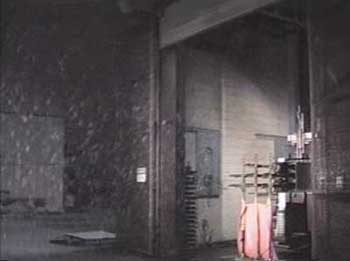
Photo 3. Arc-flash test setup
of determining arc-flash hazard conditions, known at the time of its writing. Its contents regarding arc-flash hazard calculations were based on technical papers by R. H. Lee, “The Other Electrical Hazard: Electrical Arc Blast Burns,” and by R. L. Doughty, T. E. Neal and H. L. Floyd, “Predicting Incident Energy to Better Manage the Electric Arc Hazard on 600-V Power Distribution Systems.”4
The arc-flash hazard calculations included in this guide enable quick and comprehensive solutions for arcs in single- or three-phase electrical systems, either of which may be in open air or in a box, regardless of the low or medium voltage available. Generally only systems with a supply transformer rated 125 kVA and larger are considered as having possible arc-flash hazards. Designers or facility operators can use the IEEE 1584–2002 to determine the arc-flash hazard distance and the incident energy to which employees could be exposed during their work on or near electrical equipment.

Photo 4. Wrap around face mask shown with other protective wear
As could be expected, higher magnitudes of arc current flow or longer duration of arc current flowing just intensifies the explosive forces of the sudden and violent release of energy. D.R. Doan and R.A. Sweigart showed that the results of the calculations vary over a wide range in their recent IEEE technical paper titled “”A Summary of Arc-flash Hazard Calculations.””5 In this study of 33 plants with 4892 buses or switching points under 600 volts, the median incident energy was only 2.1 cal/cm , but many buses had quite high incident energy levels:
24% of buses over 8 cal/cm2
12% of buses over 40
5% of buses over 85
1% of buses over 205
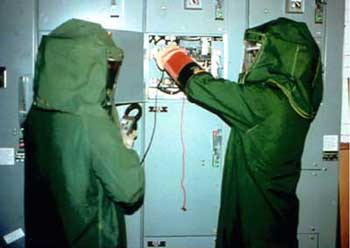
Photo 5. PPE for high level exposure
These very high incident energy levels cause the most severe injuries. The protection provided by following the default tables in NFPA 70E will not provide adequate protection for the hazards presented in these cases. Only an arc-flash hazard analysis can identify these buses or switching points and allow providing protection or taking steps to reduce the energy level.
Determining incident energy and the arc-flash boundary involves following a process. There are several steps in an arc-flash hazard analysis:
1. Get a single line diagram and identify buses and switching points of concern. List modes of operation so separate calculations can be done for each — one/two utility supplies, operation on generators, secondary ties open/closed.
2. Find the bolted fault current at each bus for each mode of operation and determine how much of it will flow through the protective device that will interrupt the fault — deduct the fault current generated by motors and that comes through an alternate supply.
3. Calculate the arcing fault current in the protective device using a 1584 calculator. Not needed for certain fuses and not needed if using circuit breaker shortcut method.
4. Find the clearing time for the protective device from the time-current curves. See manufacturer’s web site if curves have not been drawn and a computer program is not available. Two seconds is commonly taken as the maximum time for a person to get out of the way.
5. Enter all data into the 1584 calculator, including grounding type, equipment class, protective device type, and the distance a person might stand from the possible arc.
6. Review data for reasonableness and select PPE.
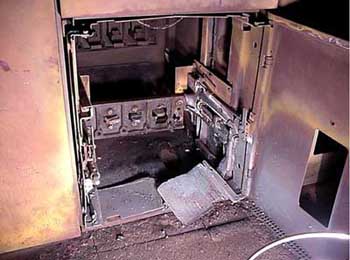
Photo 6. Cubicle following arc-flash
Many types of personal protective equipment are available. Many organizations select an everyday work uniform for electricians and others who frequently operate electrical power equipment. The clothing may consist of inherently flame-resistant (FR) fibers such as aramid fibers or it may use flame-resistant treated (FRT) cotton fabric. There are significant differences in long-term value for each of these fabrics. Aramid garments are typically priced higher than FRT cotton but have a significantly higher durability than treated cotton, lowering the life cycle cost. In addition, flame-resistant protection is carried in the chemistry of the fibers whereas with FRT cotton, the (FR) treatment can be lost in laundering or wear. Photo 4 and Photo 5.
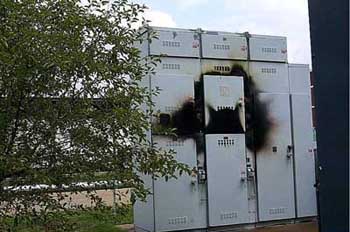
Photo 7. Outdoor gear following arc-flash
R pants are required with any type of upper body protection. NFPA 70E and OSHA also require face and head protection and that can be provided by hoods or by face shields plus a balaclava. Leather gloves or voltage-rated gloves provide good hand protection. Leather or rubber boots provide foot protection. PPE selected involves a compromise between providing protection and allowing manual dexterity, vision, and hearing with minimal thermal stress. Following IEEE 1584 and NFPA 70E is the way to optimize the selection.
When the calculations are complete, you can review the levels of PPE for all the buses together. Recognize you can go to the reference tables page and change the levels to match changes in NFPA 70E or to match your supplier’s PPE ratings. Select a minimum number of levels for the particular facility, reset the levels to match, and rerun the calculations.
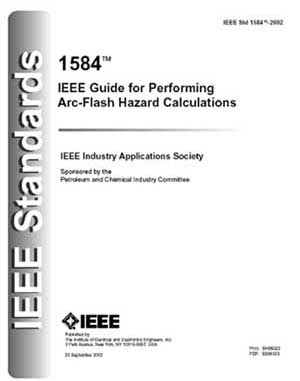
Photo 8. IEEE Guide for Performing Arc-Flash Hazard Calculations
IEEE 1584—2002 results have enabled users to recognize that some electrical systems have such high incident energy levels that additional design features, such as having suitable and readily accessible disconnecting means separate from equipment to be worked must be included, or work on or near such high risk areas can only be performed under de-energized conditions. Users of IEEE 1584 should be aware that it does not enable them to address aspects of arc-flash hazards other than incident energy. Photo 6 and Photo 7.
When you have completed your calculations, you need to review them to see if engineering or operating changes are needed. As shown above, it is common to find some buses with an incident energy over the 40 cal/cm that is considered safe for work with PPE. In those cases no work should be done with equipment energized, even with switching equipment doors closed. Engineering options include:
- Replacing switchgear with arc-resistant switchgear
- Adding a secondary main relay that can trip a primary circuit breaker
- Adding zone interlocking in switchgear: A signal from a downstream circuit breaker blocks an upstream circuit breaker from tripping. The upstream CB can be set quite fast in this case.
- Changing fuse type: For under 600 V cases, perhaps going to a current-limiting fuse. For higher voltages, perhaps going from a current-limiting fuse to a noncurrent-limiting fuse.
- Adding differential relays
Operating options include:
- Adding provision for remote racking and remote operation
- Getting a racking wrench that has a long handle, which increases the working distance
- Changing the sequence of switching operations to reduce the time when exposure is high.









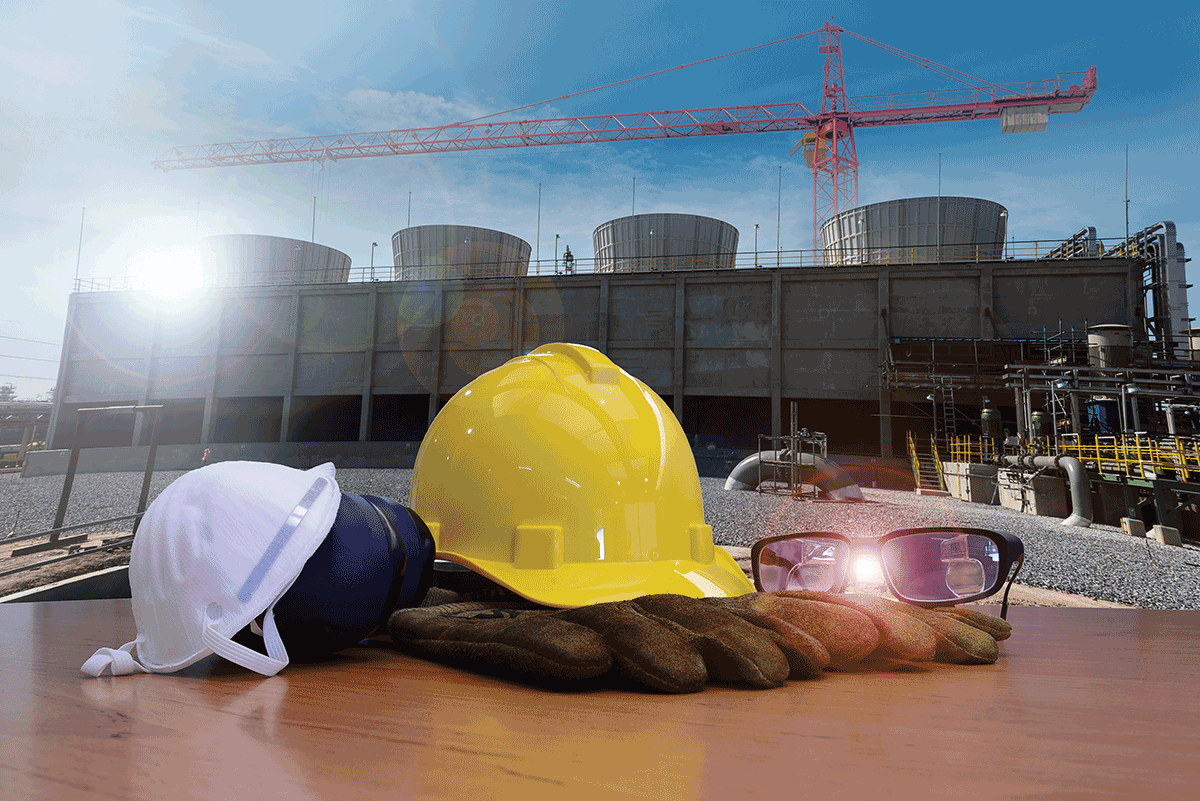
Find Us on Socials